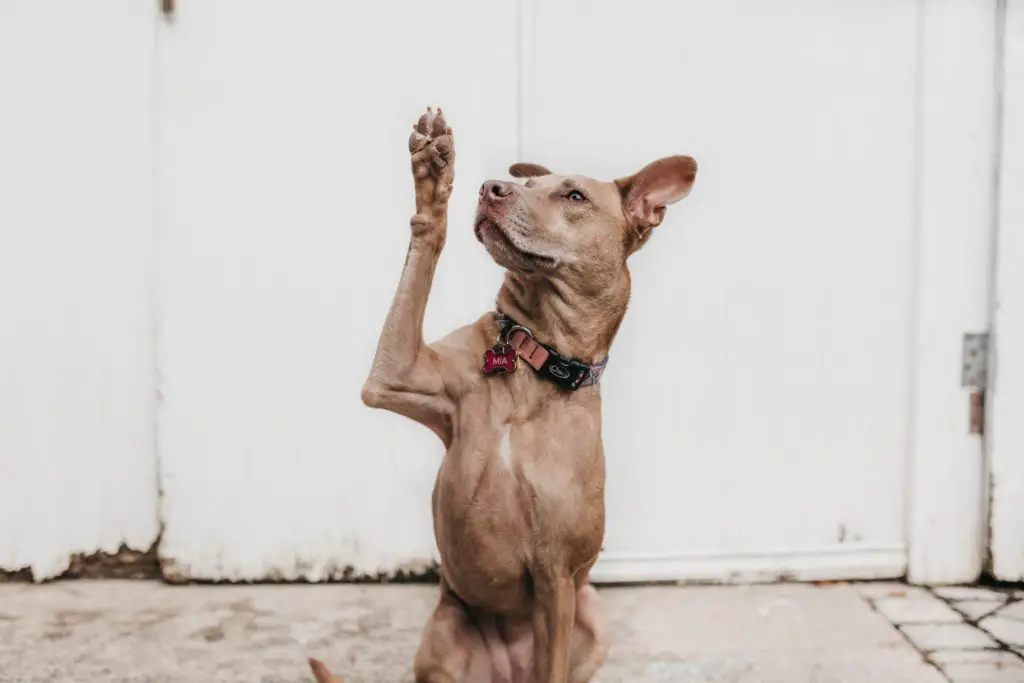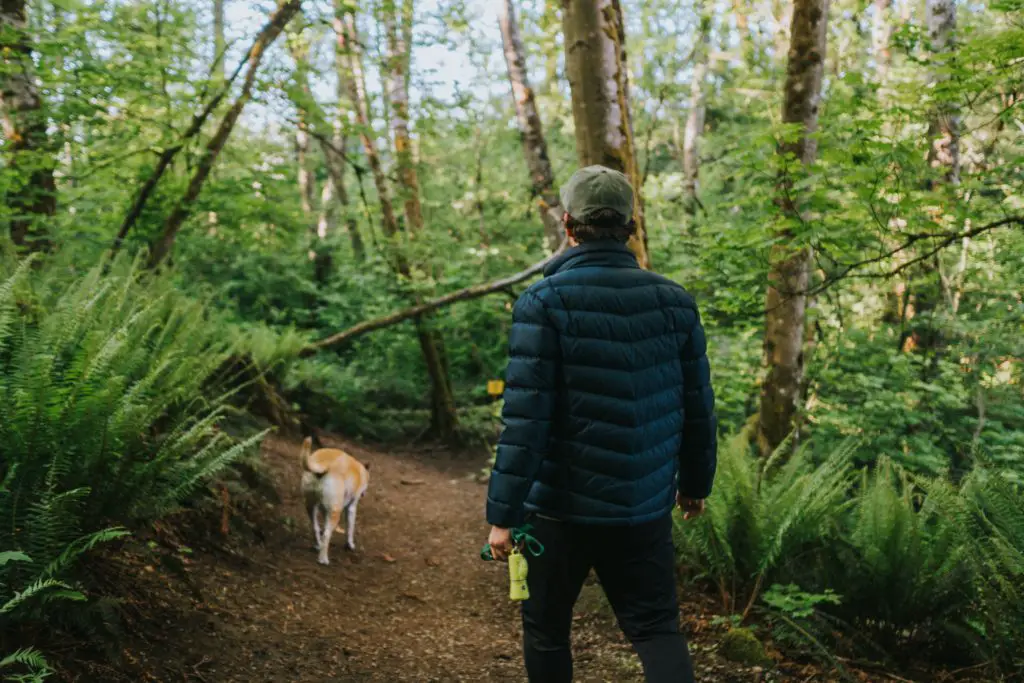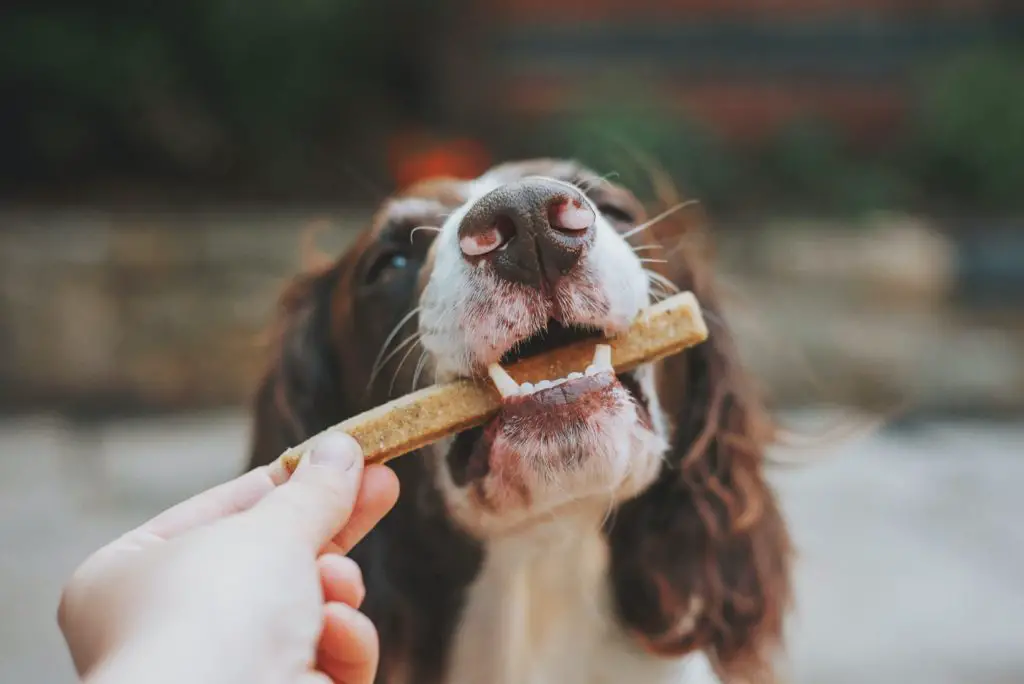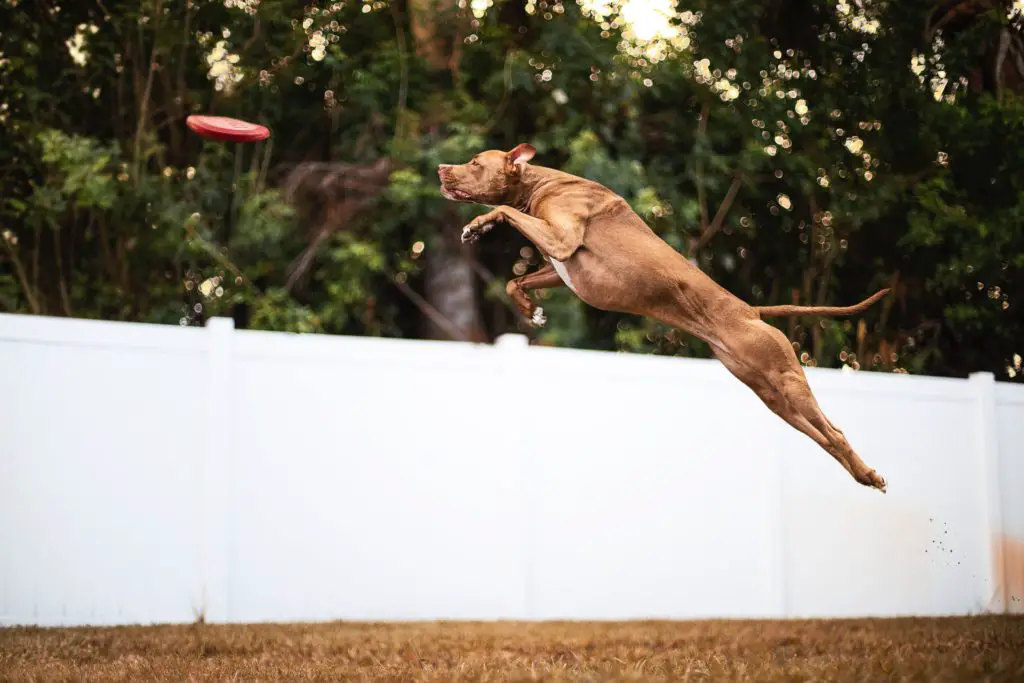How many times have you sat down on the sofa, or at the desk ready to work on your laptop, and then your dog comes along and paws at you? You may be familiar with this behavior as something that your dog frequently does to get attention from you. It probably works too.
Why does your dog paw at you? This is a learned behavior where the true meaning depends on the situation at hand. The dog can paw at you to grab your attention, show its love, affection, or even sympathy. Another common reason for pawing is to show that the dog is distressed and in need of comfort and support.
You turn around and ask them what they want even though they may struggle to fully articulate their reasons. So, why does your dog paw at you? Is it always for the same reason, or are there any triggers for this sort of behavior?
Why Does My Dog Paw At Me?
There are a few different reasons why your dog may paw at you. Some dogs will do this as a way of getting attention from you because they know that it is effective. However, there can be a range of reasons why your dog needs this sort of attention. Therefore, it is important to consider all of the other social and behavioral cues that may be in play. Are they looking to maintain your attention while you are petting them? Are they looking for comfort and support during a difficult moment? Or, perhaps they are trying to offer that comfort and support to you?
It is important to be able to tell the difference between the following reasons why dogs paw at you:
- to get attention because they can and because they are overly needy
- because they are distressed and in need of comfort and support
- because they want to comfort you in times of trouble
Watch out for other cues, such as the sounds your dog makes and other aspects of their body language. You may decide to ignore a dog pawing for attention for no reason, and you can train your dog to limit this behavior. But, you don’t want to ignore a dog that is in distress or that is just trying to help you.
Why Does My Dog Paw At Me When I Pet Her?
This action makes a lot of sense if you are a dog and you are enjoying the time spend being petted by your owner. After all, you are using your own “paw” in a similar motion when stroking them. Therefore, your dog may simply be trying to reciprocate the feeling to show their affection. This can be a nice exchange that brings you closer to your pet. Dogs don’t have the dexterity in their legs to create the same fluid stroking motion that we like to use. Therefore, this repetitive patting is the next best thing.
This idea of a dog showing affection through pawing also leads us to another possible reason for dogs pawing. Dogs are empathic creatures and you may have times where your dog seems in-tune with you and your family during illness, sadness, or even bereavement. Some will come and lie with you to be close to you, but others may paw at you if they are concerned for your well-being. A dog that paws when you pet them may sense that you are engaging in this for your own comfort as much as theirs.
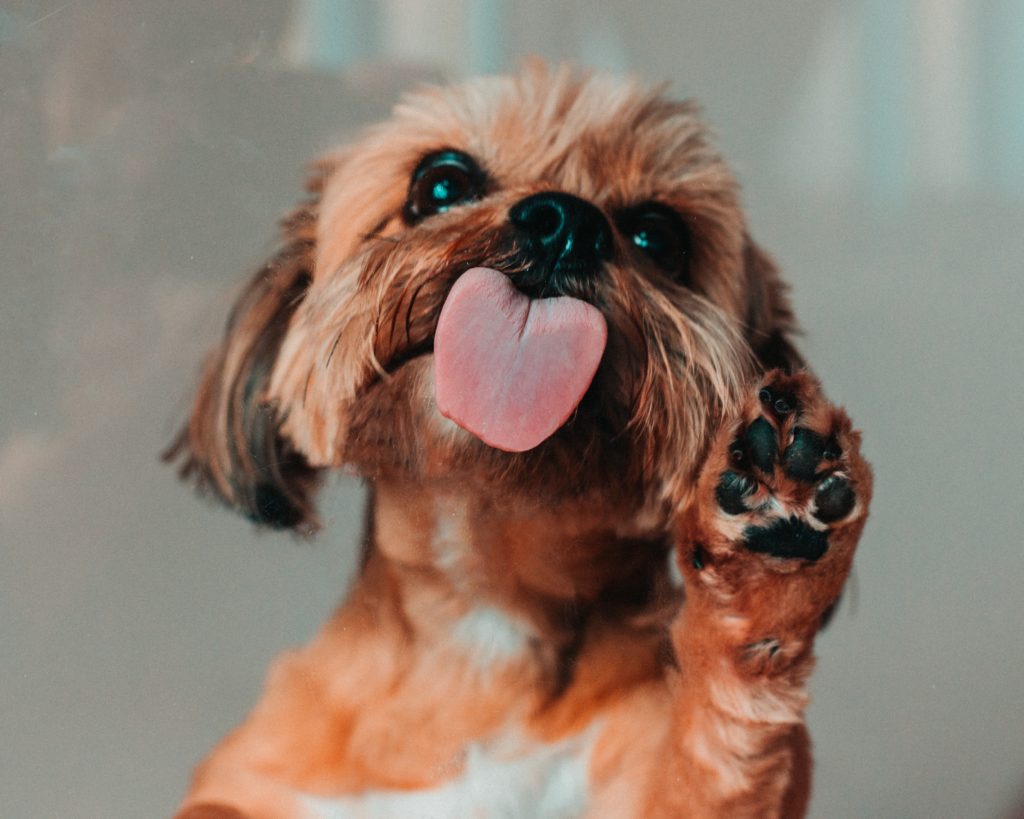
Why Does My Dog Paw At Me When I Stop Petting Her?
Alternatively, you may not notice your dog pawing at you as you pet them, but they may start to do so when you stop. This could be a sign that they don’t want you to stop. They may reach other to you and put their paw on your hand or arm and basically say “more please”. It is important to pay attention to why your dog may be after more attention. If your dog is currently dealing with an injury or illness then it may be in need of a little more love and attention than normal. The same is true if they are going through a stressful situation. For example, you may go to pet your dog during a thunderstorm to comfort them and then stop. But, your dog might not be ready for you to stop yet.
Some people that foster rescue dogs also find that they are a bit needier when it comes to this sort of attention. It is up to you how much you want to indulge in this behavior and whether it is appropriate to do so. If your dog is attention-seeking for no apparent good reason, you may want to work on that with training.
Why Does My Dog Put His Paw On Me And Push?
There are, however, some instances where it might not be so appealing for your dog to paw at you. There are some different approaches that dogs can take when using their paw. A lot of dogs will be very gentle and just place their paw on your hand – your own paw as it were – or on your arm. They may do so with no noise or extra pressure and wait for a reaction. Others can get more physical and may even start to push against you. Your dog is doing when it can to show confidence and some dominance in order to get its way. They know that they have the upper hand in the situation and may see how far they can go to get what they need.
What Does It Mean When Your Dog Paws At Your Face?
This is where a lot of dogs can push their owners too far. It is one thing to have your dog continually patting your arm or putting their body weight on your torso. Pawing you in the face feels more dominant and aggressive. There is also the risk that dogs may learn to do this with other people, and may put their paws in the faces of small children.
The underlying reason could be the same as before. There could be a medical need or they might just be bored. The difference is that the dog has learned that getting in your face is a more effective way of getting a response and harder to ignore. Wherever and however dogs engage in this sort of behavior, it all comes from your responses and the fact that you taught them it was OK. So, if you want to change that and either adapt the dog’s actions or stop it altogether, you need to work on your training.
How Do I Teach My Dog Not To Paw At Me?
It is important to remember that all of this is learned behavior. You might not appreciate being pawed in the face or pushed against, especially if your dog is on the heavier side. But, at some point, you rewarded this behavior and showed your pet that it is a reliable way to get attention. There is nothing wrong with dogs using their paws to communicate in a calm, gentle way for the right reasons. For example, you may be fine with them putting their paw on your arm to indicate they need more time being petted. Or, you may be thankful for those signs of affection when you are low.
So, the answer here lies in rewarding pawing in the right circumstances. If they are pawing and showing signs of pain or discomfort, you should always do your best to console them and make things better. If the dog is calm and gentle and pawing out of love during some bonding time, you can reward this and continue to engage in petting them. But, if the pawing gets incessant and forceful for no legitimate reason, you can ignore them and decline from petting them back. It could take some time for this to all sink in, especially if you have allowed this sort of pointless pawing for a long time. But, smart dogs will soon learn when to use their paws and how to do so effectively.
Also, remember that your dog may have learned to use its paws to get attention from you because this was a better response than barking at you. In the past, you may have encouraged this silent response when your dog needed you for something because it meant they had learned not to bark so much. So, you don’t want to undo all that and have them regress to barking because pawing no longer works at all. Essentially, it is all about fine-tuning the training and controlling the way your dog does this instead of eliminating it entirely. After all, there are those positive times when pawing can make a difference and help the pair of you communicate and show love during difficult times.
Conclusion
In short, we need to remember that this is a learned behavior where the true meaning depends on the situation at hand. If the dog has learned that placing their paw on you is an easy way to gain attention, they can use this action in various circumstances. So, make sure to take note of other behavioral cues, noises, body language, and noticeable environmental influences. Use these to determine if there is a problem or if they just want attention for no apparent reason. Finally, don’t forget to work on that training to make things easier.
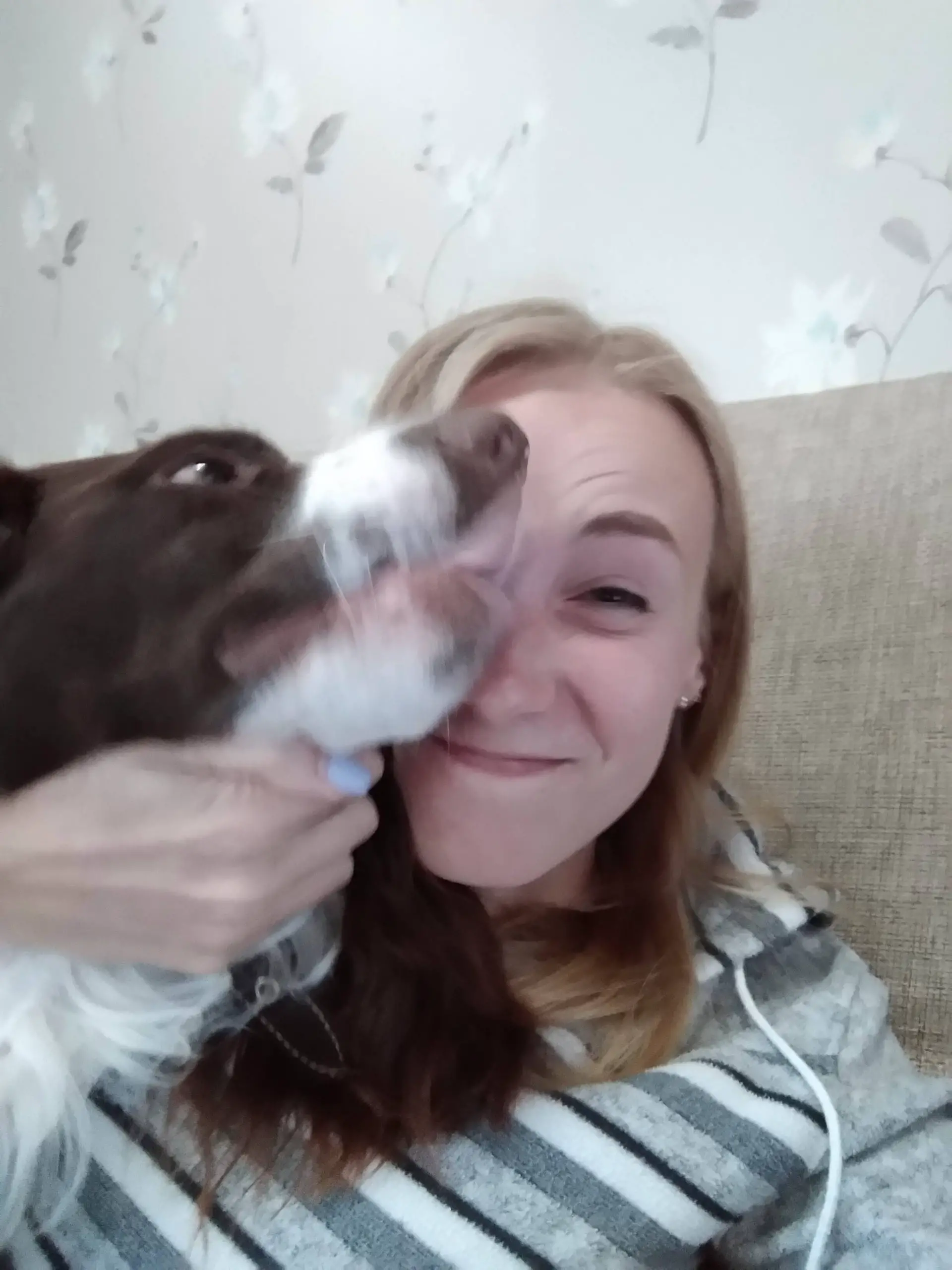
My name is Katie, and I have had different pets at home for as long as I can remember. While I can definitely say I love all animals in general, my heart belongs to cats and dogs. I know you are supposed to choose one or the other, but I could never really decide. I’ve also owned hamsters and fish when I was a kid, and they filled my childhood with very delightful memories.

